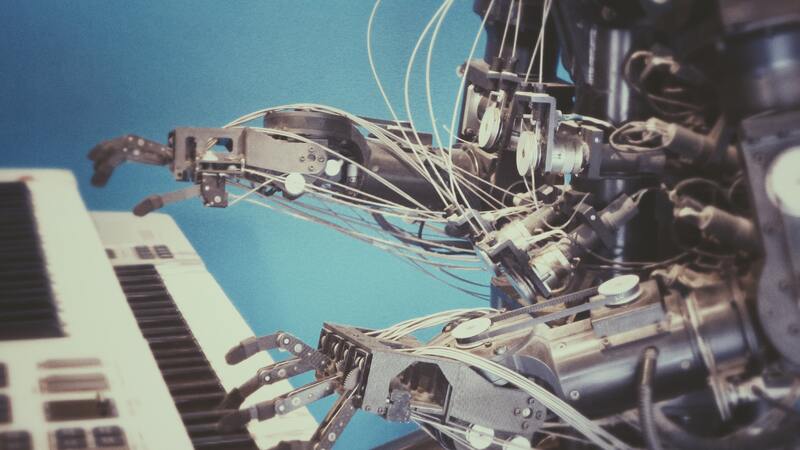Overview
Human error is a natural part of any complex system involving people, and it can occur in various forms during business processes. It can stem from multiple factors, including fatigue, lack of training, miscommunication, stress, etc. While it's extremely challenging to eradicate human error from business processes completely, significant efforts can be made to minimize its occurrence and impact. However, organizations can implement various strategies to reduce the likelihood of human error and mitigate its consequences. Automation is a strategy that can significantly reduce human errors in business processes by removing or minimizing the need for manual intervention in various tasks. Balancing human involvement with automation and technological advancements can create more robust and reliable systems.
In this blog, we will explain the different types of Human Errors that occur during Business Processes and how those could be eradicated using Automation.
Types of Human Errors
Human errors are often categorized based on the underlying factors that contribute to them. Here are some common types of human errors that can occur during business processes:
Slips and Mistakes:
- Action Slips: Unintended actions due to automatic behavior, such as pressing the wrong button or key.
- Capture Errors: Data entry or transcription errors, such as mistyping numbers or names.
- Data Entry Mistakes: Typing the wrong information due to distractions or inaccuracies.
- Perceptual Distortions: Misinterpreting information due to distractions, fatigue, or lack of attention.
Lapses and Omissions:
- Memory Lapses: Forgetting to perform a step or task.
- Attention Lapses: Missing critical information or steps due to inattention or distractions.
- Omissions: Leaving out essential steps or components of a process.
Rule-Based Errors:
- Misinterpretation of Rules: Misunderstanding or misapplying rules or guidelines.
- Overreliance on Rules: Blindly following rules without considering the context or exceptions.
Knowledge-Based Errors:
- Lack of Knowledge: Errors caused by insufficient knowledge or training.
- Problem-Solving Errors: Errors in decision-making or problem-solving due to lack of experience or expertise.
Communication Errors:
- Miscommunication: Inaccurate or incomplete transmission of information between individuals or teams.
- Ambiguity: Unclear or vague communication that leads to misunderstandings.
Compliance and Procedural Errors:
- Non-Compliance: Failure to adhere to established procedures, policies, or regulations.
- Procedural Errors: Errors in following established processes or procedures.
Timing Errors:
- Premature Actions: Performing a task too early, disrupting the sequence of events.
- Delayed Actions: Performing a task too late, affecting the desired outcome.
Stress and Fatigue Errors:
- Stress-Induced Errors: Errors caused by high-stress levels, leading to impaired decision-making and attention.
- Fatigue-Induced Errors: Errors resulting from physical or mental fatigue, reducing alertness and cognitive abilities.
Multitasking Errors:
- Divided Attention: Errors caused by attempting to perform multiple tasks simultaneously, leading to reduced focus and accuracy.
Decision-Making Errors:
- Confirmation Bias: Relying on information that confirms existing beliefs while ignoring contradictory data, leading to flawed decisions.
- Halo Effect: Forming judgments based on a single positive trait or information leads to biased decision-making.
- Groupthink: Making decisions in a group based on conformity and avoiding dissent can lead to poor choices.
Eradicating Human Errors
Rapid Digital Automation (RDA) is a combination of Business Process Automation (BPA), Robotic Process Automation (RPA), and Artificial Intelligence (AI). RDA can create a robust framework for eradicating human errors within business processes. Each of these technologies brings its strengths to the table, and together, they can provide a comprehensive solution to reduce errors and optimize operations.
Business Process Automation (BPA)
BPA involves automating entire business processes, often spanning multiple departments and systems. It optimizes end-to-end workflows, reduces manual interventions, and improves efficiency. BPA provides a strategic approach to process optimization.
Robotic Process Automation (RPA)
RPA is focused on automating repetitive, rule-based tasks performed by humans. It involves using software robots or "bots" to mimic human interactions with user interfaces, applications, and systems. RPA is particularly effective for tasks involving data entry, extraction, copy-pasting, and more.
Artificial Intelligence (AI)
AI encompasses technologies like machine learning and natural language processing that enable systems to learn from data, make decisions, and perform tasks that typically require human intelligence. AI adds cognitive capabilities to automation, enabling systems to understand, analyze, and respond to complex scenarios.
Here's how automation can contribute to error reduction:
- Elimination of Repetitive Tasks (RPA): Repetitive tasks are prone to errors due to fatigue, boredom, and lack of attention. Automation can handle these tasks flawlessly without experiencing the decline in performance that humans might face.
- Reduced Data Entry Errors (RPA): Automated data entry processes can eliminate mistakes caused by manual data input. The software can transfer information accurately from one system to another without typos, transpositions, or omissions.
- Task Complexity Handling (RPA): Complex tasks that require precision and involve numerous steps can be prone to errors when performed manually. Automation can handle such complexity accurately and reliably.
- 24/7 Operations (RPA): Automated processes can operate around the clock without human intervention. This reduces the need for shift changes and minimizes the possibility of errors occurring during handovers.
- Process Mapping and Design (BPA): BPA begins with mapping and optimizing processes. By identifying error-prone areas and streamlining workflows, businesses can prevent errors from occurring in the first place.
- Consistency (RPA + BPA): Automated systems consistently follow predefined rules and procedures, reducing the variability often accompanying human tasks. This reduces the likelihood of errors caused by human inconsistencies.
- Speed and Efficiency (RPA + BPA): Automation can perform tasks much faster than humans, reducing the chances of errors due to time pressures. This is particularly important in industries where quick responses are essential.
- Improved Compliance and Adherence (RPA + BPA): Automated systems can consistently enforce adherence to regulations and policies, minimizing the risk of non-compliance-related errors.
- Improved Communication (RPA + BPA): Automation can facilitate communication between systems and teams, reducing miscommunication-related errors.
- Error Detection and Correction (RPA + AI): Automated systems can be programmed to detect errors and anomalies in data, transactions, or processes. They can also trigger alerts or initiate corrective actions, reducing the impact of errors.
- Adaptive Workflows (BPA and AI): BPA can create adaptive workflows incorporating AI-driven decision-making. For example, if an AI system detects an error-prone situation, it can trigger alternative workflows or notifications to prevent errors.
- Audit Trail and Traceability (RPA + BPA + AI): Automated systems often provide detailed logs and audit trails, making it easier to track the sequence of events and identify the source of errors when they occur.
- Natural Language Processing (RPA + BPA + AI): AI-powered NLP can assist in understanding unstructured data like emails or documents, reducing errors due to misinterpretation.
- Continuous Improvement (RPA + BPA + AI): RDA can help monitor processes, identify patterns of errors, and suggest process refinements or updates based on data-driven insights.
Summary
Combining Robotic Process Automation (RPA), Business Process Automation (BPA), and Artificial Intelligence (AI) forms a potent strategy to eliminate human errors within business processes. RPA excels in automating repetitive tasks precisely, minimizing errors caused by monotony and fatigue. BPA optimizes end-to-end workflows, reducing manual interventions and streamlining processes to prevent errors at their source. AI introduces cognitive capabilities, enabling systems to understand, analyze, and respond to complex scenarios. RPA mitigates errors in routine tasks; BPA provides a holistic process improvement approach, and AI adds intelligence for error prediction, anomaly detection, and adaptive decision-making. This integrated approach empowers businesses to achieve higher accuracy, efficiency, and reliability while significantly reducing the risk of human errors across diverse operational areas.
Despite the benefits, it's important to note that automation requires careful planning, implementation, monitoring, and maintenance. Poorly designed automated processes or lack of human oversight can lead to new errors or difficulties in handling exceptional situations that fall outside the scope of automation.





